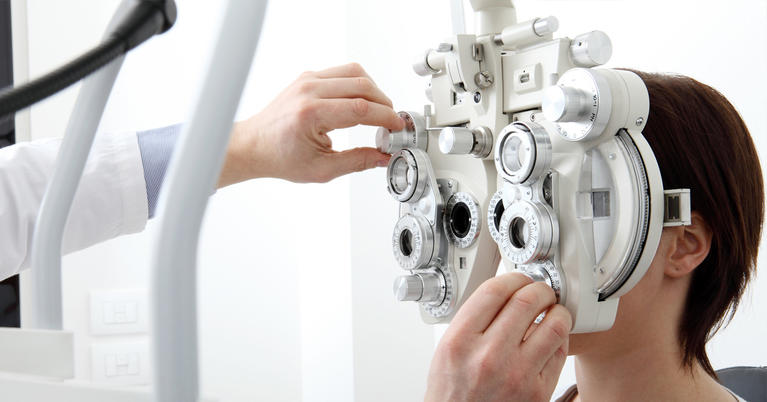Neurologist in Andalusia: Leading Specialists and Clinics Listed
Neurologist in Andalusia: Leading Specialists and Clinics Listed
Blog Article
The Benefits And Drawbacks of Various Refractive Surgical Procedures for Improved Eyecare

LASIK Surgical Procedure
LASIK surgery is a frequently carried out refractive treatment that intends to remedy vision issues such as nearsightedness, astigmatism, and farsightedness. This medical strategy has actually gained popularity because of its effectiveness in giving patients with clearer vision and lowering their reliance on glasses or contact lenses. During the treatment, a thin flap is produced on the cornea, and a laser is used to reshape the underlying tissue, fixing the refractive mistake. The flap is after that repositioned, permitting for quick healing and marginal discomfort for the client.
Among the key benefits of LASIK surgical procedure is the rapid improvement in vision experienced by numerous patients. Most people see a substantial improvement in their vision soon after the treatment, with minimal downtime needed for healing. Furthermore, LASIK is known for its high success price and low incidence of difficulties when carried out by experienced cosmetic surgeons. Nevertheless, like any kind of procedure, LASIK also brings some risks, including dry eyes, glow, halos, and under or overcorrection of vision. It is important for people considering LASIK surgery to undertake a thorough analysis by an eye care specialist to figure out if they are appropriate candidates for the procedure.
PRK Treatment
The PRK treatment, likewise understood as Photorefractive Keratectomy, is a kind of refractive surgical treatment that aims to correct vision issues similar to LASIK surgical procedure. Unlike LASIK, which involves creating a flap in the cornea, PRK works on the surface area layer of the cornea. Throughout the PRK treatment, the external layer of the cornea, called the epithelium, is eliminated to permit improving of the underlying corneal cells with an excimer laser. This reshaping assists to fix refractive errors such as astigmatism, nearsightedness, and farsightedness.
One of the benefits of PRK over LASIK is that it gets rid of the risk of flap-related difficulties given that no flap is developed throughout the surgical procedure. In spite of the longer recovery period, PRK can be an appropriate option for people looking for vision modification surgery.
SMILE Surgery
An advanced refractive surgical procedure strategy acquiring popularity in the area of ophthalmology is SMILE Surgery. Tiny Cut Lenticule Extraction (SMILE) is a minimally intrusive procedure that deals with vision by improving the cornea utilizing a femtosecond laser. Unlike traditional LASIK surgery, SMILE Surgical treatment involves producing a small laceration in the cornea to draw out a lenticule, which leads to less disturbance to the corneal structure and possibly much faster healing times.
One of the primary benefits of SMILE Surgical treatment is its capacity to deal with myopia (nearsightedness) and astigmatism with high accuracy, causing outstanding aesthetic outcomes for individuals. The minimally invasive nature of the treatment likewise minimizes the threat of problems such as completely dry eye disorder, making it a favorable choice for click people seeking refractive surgical treatment.

LASEK Technique
Having checked out the advantages and considerations of SMILE Surgical treatment, an additional noteworthy refractive surgical treatment strategy worth examining is the news LASEK Method. LASEK, which stands for Laser-Assisted Subepithelial Keratectomy, is a type of laser eye surgical treatment that intends to deal with refractive errors such as nearsightedness (nearsightedness), hyperopia (farsightedness), and astigmatism.
Unlike LASIK, LASEK does not involve creating a corneal flap. Rather, throughout a LASEK procedure, the surgeon utilizes a diluted alcohol solution to loosen the slim outer layer of the cornea, known as the epithelium.
Among the main benefits of LASEK is that it can be ideal for individuals with slim corneas that might not be good candidates for LASIK. In addition, LASEK commonly results in minimal post-operative discomfort and a quicker recovery time compared to PRK. The aesthetic recuperation procedure with LASEK may be slightly longer than with LASIK.
Implantable Call Lenses
Implantable Call Lenses supply a long-term vision improvement option for individuals seeking an option to standard contact lenses or glasses. These lenses, likewise called phakic intraocular lenses, are surgically put into the eye to fix refractive errors such as nearsightedness (nearsightedness), hyperopia (farsightedness), and astigmatism. cardiologist andalusia. Unlike typical contact lenses that sit on the surface of the eye, implantable contact lenses work within the eye itself, giving clear vision without the demand for everyday maintenance or elimination
One of the vital advantages of implantable get in touch with lenses is their permanence. As soon as inserted, they can important source remain in the eye forever, offering constant and stable vision adjustment. Additionally, these lenses can be an outstanding choice for individuals that are not good prospects for laser eye surgical treatment or that favor a reversible vision modification treatment.
Nonetheless, implantable contact lenses do bring some threats, including the possibility for cataracts or raised eye pressure. It is important for people considering this option to talk to an eye care expert to determine if implantable contact lenses are the ideal choice for their specific requirements and eye health.
Verdict
In verdict, each kind of refractive surgical procedure has its own benefits and downsides. LASIK surgical treatment is preferred for its quick healing time, while PRK treatment may be appropriate for individuals with slim corneas. SMILE surgical procedure uses minimal pain during the treatment, but LASEK method may have a longer recovery process. Implantable get in touch with lenses supply a choice for those that are not appropriate prospects for conventional surgical procedures. Individuals need to talk to their eye care provider to determine the most effective alternative for their specific needs.

Generally, SMILE Surgical procedure presents an encouraging choice for individuals looking to enhance their vision via refractive surgery.
Report this page